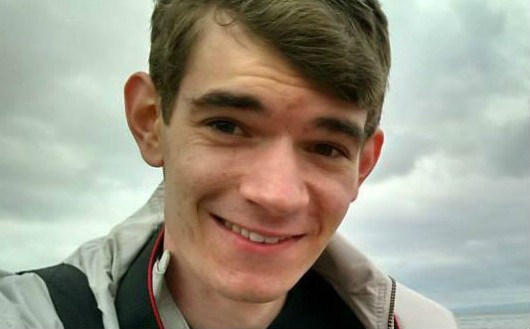
Markus Novak, a graduate student in electrical engineering, tied for fourth place in a NASA crowdsourcing contest.
Credit: Courtesy of Markus Novak
Markus Novak, a graduate student in electrical and computer engineering, tied for fourth place in a NASA crowdsourcing contest, making him the only American student to place in the top five.
Novak was awarded $1,000 for his submission, which aimed to solve one key deep space exploration problem: shielding astronauts from galactic cosmic rays.
“I was really happy about (placing in the contest),” Novak said. “I was amused to find I was the only American in the top, which is a nice little vote of confidence.”
Novak said he found out in April that he had placed fourth in the challenge, which sought proposals to protect astronauts during deep space missions.
“NASA is seeking to identify key solutions that will protect astronauts from GCR, specifically a way to reduce exposure,” according to the description of the challenge on the NASA website.
If a solution is found for this problem, a manned mission to Mars is more probable in the future, Novak said.
“Basically, one of the big challenges of going to Mars is that astronauts get irradiated by all this cosmic radiation, and that’s actually one of the big limiting factors for a human round-trip mission,” Novak said.
His submission, which proposed the use of a superconducting magnet, took about two days to think up, he said.
“In the past, NASA had looked at using magnetic fields — strong, strong magnetic fields to deflect the cosmic rays, which are basically high-energy particles,” Novak said.
Novak’s solution was based on the same principle, but differed in that his submission proposed utilizing a lens as a superconducting magnet to distort the trajectory of cosmic rays.
“What I was trying to do was create a wake in the stream of cosmic radiation the same way as a boat going down the river,” he said. “You can do the same thing to the influx of cosmic rays. If you put your astronauts or spaceship in the center of that, they’re relatively shielded from all that and you can travel a lot longer that way.”
John Volakis, director of the ElectroScience Laboratory, advises Novak and said he realized early that Novak had the right kind of mind for these types of challenges.
“Novak is an outside-the-box thinker,” Volakis said. “I’m not surprised he came up with an ingenious approach to deflect these rays.”
Volakis said that deep space exploration is not possible without protection from GCR.
“Basically that energy is very damaging to us.” Volakis said. “There are all kinds of radiation, and unless we are protected, we will not exist. The Earth’s atmosphere protects us from these cosmic rays. Once we get outside of the atmosphere we must wear a suit that repels, or we will be burned or be unable to survive.”
In total, there were 136 submissions in the contest, according to a press release from the Department of Electrical Computer Engineering. The top prize in the contest brought home $5,000, and $12,000 was awarded in the contest overall.
Novak said he plans to spend the award money on a new computer.
NASA has similar crowdsourcing contests which aim to provide solutions for space exploration that students can participate in. A follow-up to the GCR contest is now open and the deadline for submission is June 29. The top prize is $30,000.
Novak said he plans to participate in this challenge as well, and although his original idea placed in the first contest, he said he might alter his approach for the follow-up.
“I haven’t started any sort of submission yet, but that one is higher stakes. I think it’s going to be a winner-take-all and will need more of a detailed submission, but hopefully I will (participate in the contest),” Novak said. “I’m probably going to pivot a little bit because the first competition was more of an ideation thing, but the following competition is all about practicality and how soon can we realize this sort of thing, so I might have to adjust it somewhat to that.”
Novak said he would like to see more students take up an interest in citizen science, to help find solutions to ongoing problems.
Novak said once he completes his doctorate, he hopes to work with a space exploration organization, such as NASA, but wouldn’t mind applying his skill set to other technologically based companies.
“I’d like to work in the space industry, whether that be with NASA, SpaceX or Blue Origin, or any of those private companies as well, but it’s not my only pursuit,” Novak said. “There are a lot of different topics I’m interested in. Space represents a motivating challenge, it’s a tough subject and I like challenges.”


